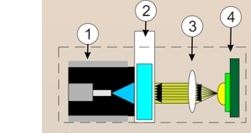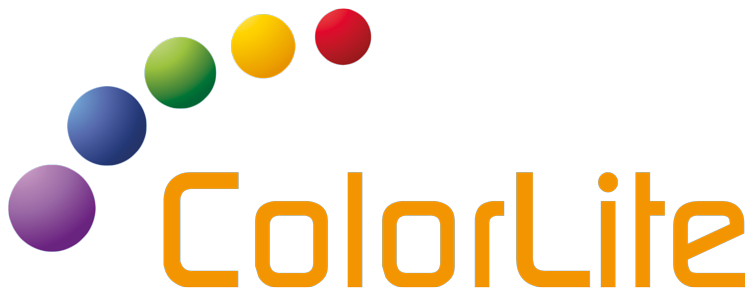How does the measurement of transparent liquids work?
How? – In Transmission mode
Transparent liquids are clear solutions where light is transmitted without being reflected. Light being tranmittted through a clear liquid will interact dependent of the spectral properties. The amount of light transmitted and the colour is dependent on the path of the light. This means the length of the optical path also affects results.
The best way to measure transparent liquids is to measure in a transmission mode. This is realised by sending white light through a fixed path length of the sample and measuring the spectrum of the incoming light. The transmission spectrum is calculated by the ratio of this spectrum to that of clear distilled water. From the transmission spektrum colur values such as CIE L*a*b* can be calculated, but also values such as iodine, haze or extinction values for certain wavelengths.
What is needed?
For measuring in transmission mode Colorlite offers an accessory for the sph870/sph900 range, the CA10-LS which is available as set including a holder for the spectrophotometer.
Cuvette holder CA10-LS with internal light source and collimator
Properties:
- Can be used with disposable cuvettes
- Optical path 10 mm
- Optimal fitting of the cuvette through sprung spectrophotometer probe head
- Resistant housing made of Polyoxymethylene
- Light source: White LUXEON LED (-LS)
- Dimensions: 100 x 40 x 40 mm, weight 190 g
- Control and power supply direct from the spectrophotometer
- Including 100 disposable cuvettes and software modification

1) Probe head
2) Cuvettes
3) Collimator
4) Light Source
Attached to:
Holder for the spectrophotometer that is easily clipped on and off, with the viewing angle adjusted as needed, with integrated junction to the power supply (100-240 VAC).
If the MA38 set for measuring inhomogenious samples is already in use or needed for other samples, an ecomonical solution for measuring transparent liquids is to use a relative simple reflector. This accessory is placed in the larger optical cuvette of the MA38 set submersed in the liquid and reflects light back into probe head, where it is measured.

